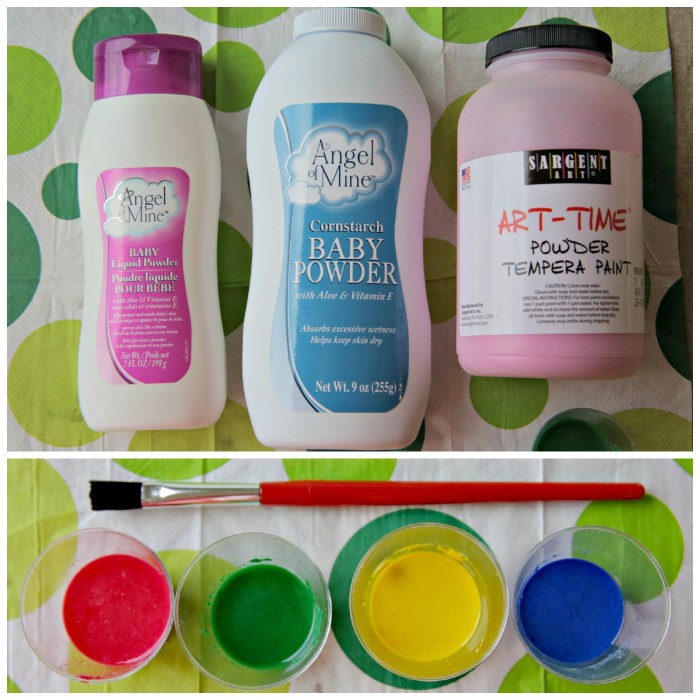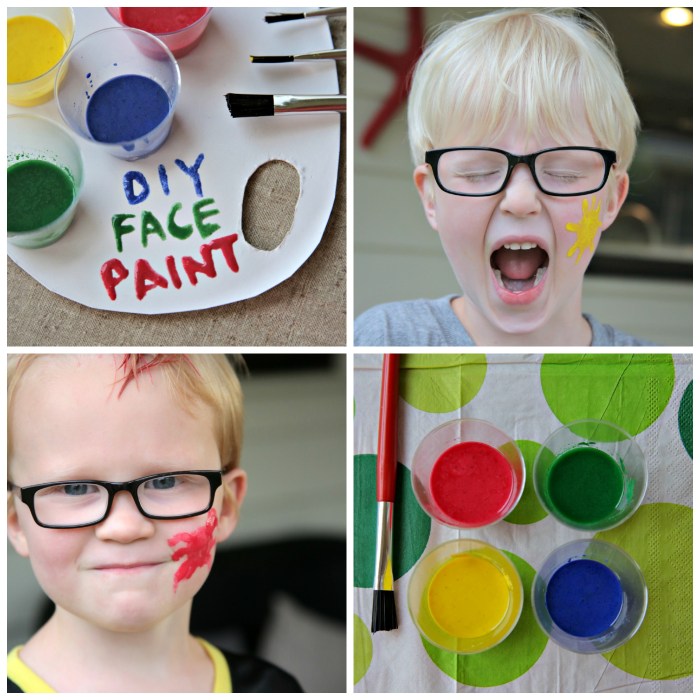DIY white face paint opens up a world of creative possibilities, from playful Halloween costumes to intricate theatrical makeup. But before you dive into mixing ingredients, it’s crucial to understand the safety aspects involved. This guide will equip you with the knowledge to create safe and effective white face paint while exploring various techniques and recipes.
We’ll delve into the potential risks associated with using common household ingredients, guide you through choosing the right ingredients for your specific needs, and provide detailed instructions on mixing, applying, and removing your DIY white face paint. We’ll also touch on the artistic side of things, exploring different designs and techniques to inspire your creativity. Whether you’re a seasoned artist or a beginner, this comprehensive guide will empower you to create stunning white face paint masterpieces with confidence.
Safety First

Creating your own white face paint might seem fun and cost-effective, but it’s essential to prioritize safety. Using everyday ingredients like cornstarch, flour, or even store-bought white paint can pose health risks if not handled properly.
Potential Health Hazards
Using ingredients like cornstarch, flour, or store-bought white paint for face paint can carry potential health hazards.
- Irritation and Allergies: These ingredients can irritate sensitive skin, leading to redness, itching, and even rashes. Some people may be allergic to specific components, triggering more severe reactions.
- Inhalation Risks: Fine particles from cornstarch, flour, or paint powders can be inhaled, potentially causing respiratory problems, especially for individuals with existing conditions like asthma.
- Contamination: DIY face paint is susceptible to contamination from bacteria or fungi, especially if stored improperly. This can lead to skin infections.
- Toxicity: Store-bought paints, even those labeled “non-toxic,” may contain chemicals that can be harmful if applied directly to the skin, particularly for prolonged periods.
Common Allergens and Sensitivities
Many common ingredients used in DIY face paint can trigger allergic reactions.
- Cornstarch: Some individuals are allergic to corn, and cornstarch can cause reactions like hives, itching, and swelling.
- Flour: Wheat flour is a common allergen, and even a small amount can trigger reactions in sensitive individuals.
- Titanium Dioxide: This pigment is often used in white paint and can cause irritation and allergic reactions in some people.
- Fragrances and Preservatives: Added fragrances and preservatives in store-bought paints can irritate sensitive skin and trigger allergic reactions.
Patch Testing and Safe Practices
Before applying any DIY face paint to your entire face, it’s crucial to conduct a patch test.
- Patch Test: Apply a small amount of the prepared face paint to a discreet area of your skin, like the inside of your elbow, and wait 24-48 hours. If you experience any redness, itching, or irritation, do not use the paint.
- Choose Safe Ingredients: Opt for ingredients specifically designed for cosmetics, like mineral pigments, and avoid using ingredients intended for other purposes, like household paints.
- Proper Storage: Store DIY face paint in airtight containers in a cool, dry place to prevent contamination.
- Remove Carefully: Wash off the face paint gently with warm water and a mild soap. Avoid rubbing or scrubbing, as this can irritate the skin.
Beyond the Basics: Diy White Face Paint

Now that you’ve mastered the basics of creating a white face paint base, it’s time to explore the exciting world of adding color and detail to your creations. Adding color to your white face paint opens up a world of possibilities, allowing you to create a wide range of looks, from subtle highlights to bold, dramatic effects.
Adding Color with Pigments, Diy white face paint
You can achieve different shades and tones by incorporating pigments into your white face paint. Pigments come in a variety of forms, including powders, pastes, and liquids.
To add color to your white face paint, you can use a variety of pigments. Here are some popular choices:
* Micas: Micas are natural minerals that come in a wide range of colors, including iridescent and pearlescent shades. They provide a subtle, shimmery effect when added to white face paint.
* Oxides: Oxides are inorganic pigments that are known for their high pigment concentration and durability. They come in a variety of colors, including red, yellow, brown, and black.
* Cosmetic-grade pigments: These pigments are specifically designed for use on the skin and are generally safe for use in face paint. They come in a wide range of colors and finishes, including matte, shimmer, and metallic.
When choosing pigments, it’s important to select those that are safe for use on the skin. Avoid using pigments that are not specifically designed for cosmetic use.
Mixing Colors
Mixing pigments to achieve specific shades and tones is a fundamental aspect of face painting.
Here are some general guidelines for mixing colors:
* Start with a small amount of white face paint. Add a tiny amount of pigment at a time, and mix thoroughly until you achieve the desired shade.
* Use a palette knife or spatula to mix the pigments. This will help to ensure that the pigments are evenly distributed.
* Experiment with different color combinations. There are endless possibilities when it comes to mixing pigments. Don’t be afraid to try new things and see what you can create.
Creating Textures and Patterns
You can add texture and pattern to your face paint using a variety of tools and techniques.
Here are some tips:
* Use stencils: Stencils are a great way to create intricate patterns and designs. Simply place the stencil over the face paint and apply a contrasting color with a sponge or brush.
* Apply with a sponge: Sponges can be used to create a variety of textures, from soft and blended to bold and dramatic.
* Use a brush: Brushes are great for adding fine details and creating realistic effects.
* Experiment with different tools: You can use a variety of tools to create unique textures and patterns. Try using things like toothbrushes, sponges, cotton balls, or even your fingers.
Creating your own white face paint can be a rewarding experience, allowing you to unleash your creativity and personalize your projects. By following the safety guidelines and exploring the various techniques and recipes presented in this guide, you’ll be equipped to craft high-quality white face paint that’s both safe and aesthetically pleasing. So, gather your ingredients, unleash your artistic vision, and enjoy the transformative power of DIY white face paint.
DIY white face paint is a versatile base for many costumes, especially when you want to create a magical look. If you’re going for a mermaid vibe, try adding some shimmery blue or green eyeshadow and drawing on scales. For a more realistic approach, you can find inspiration for a mermaid DIY outfit online, and then use your white face paint to complete the look with some dramatic eye makeup and a subtle highlight on your cheekbones.
No matter what your style, DIY white face paint can be a fun and affordable way to bring your costume ideas to life.
